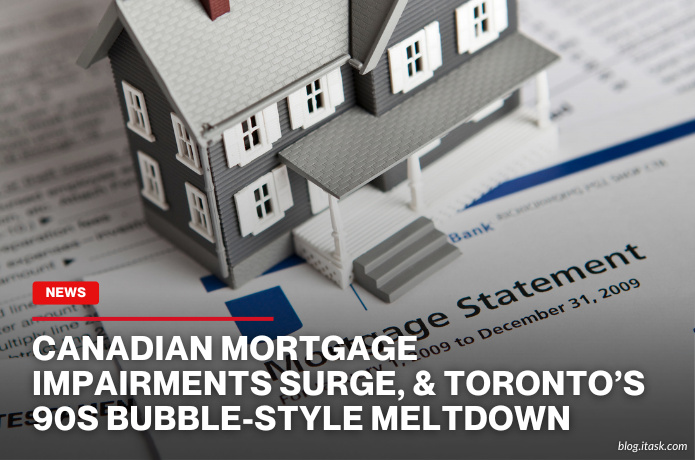Canadian Mortgage Impairments Surge, & Toronto’s 90s Bubble-Style Meltdown
Canadian Mortgage Impairments Surge, & Toronto’s 90s Bubble-Style Meltdown

Canada’s top banks are facing a jump in mortgage losses. In the first quarter of 2025, mortgage impairments rose by 65% from recent lows—up to 0.43%, compared to 0.26% in 2022. That may sound small, but the speed of the increase—10% more impaired loans just in that quarter—has raised concern.
While the numbers aren’t yet a crisis, central bankers are watching closely. The current impairment rate is around what it was before the pandemic. Still, if problems deepen—especially among borrowers with risky profiles—there’s a real fear taxpayers could end up paying for another bailout.
Smaller banks are showing more serious trouble, even if it’s not widely talked about. These lenders often serve clients turned down by bigger banks, which puts them at greater risk. While they hold only a small piece of the total mortgage market, their rising impairments suggest the national average could be much worse if fully counted.
When mortgage loans go bad, it usually means more than just a bump in the road. Borrowers often try to refinance or stretch payments before missing them. So when defaults happen, it signals that income and housing costs are badly out of balance. That can hit regular families or investors who bought too much in shaky markets.
In Toronto, the housing market is showing signs of a major slowdown. This spring, home sales dropped to levels not seen since the early 1990s crash. At the same time, inventory jumped, and average prices fell—bringing the typical home back under the million-dollar mark. It’s a sharp turn from the high-speed growth seen over the past ten years.
Some longtime residents are drawing comparisons to the 90s bubble. Back then, high interest rates and rising job losses pushed many homeowners to sell or rent. Today’s situation may look different in numbers, but the pressure feels the same. People with heavy debt loads are facing fewer buyers, more competition, and less certainty about what comes next.
